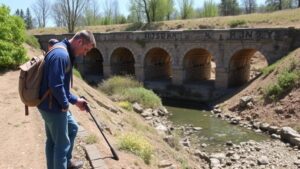Recovering Antique Bottles in Shipwreck-Exposed Coastal Areas
Recovering Antique Bottles in Shipwreck-Exposed Coastal Areas
Recovering antique bottles from shipwreck-exposed coastal areas represents a unique intersection of archaeology, history, and marine preservation. These artifacts can reveal insights into past trade practices, daily life, and even the environmental conditions of the times when they were manufactured and used. This article explores the methodologies, significance, challenges, and ethical considerations of recovering such items. We will also highlight notable case studies and provide practical guidance for those interested in this intriguing field.
Understanding the Historical Context
The recovery of antique bottles is intertwined with maritime history. Shipwrecks often occur due to treacherous weather conditions, navigational errors, or conflicts. Once submerged, bottles can be preserved by the cool ocean environment, only to be exposed through erosion or shifting sands due to natural forces like storms or tidal changes.
For example, the wreck of the SS Central America, which sank in 1857, revealed thousands of bottles that provide a tangible connection to the Gold Rush era. Scholars have used these findings to analyze the distribution of goods and consumer habits in America during that period.
Techniques for Recovery
The process of recovering antiques involves several techniques, each with specific applications depending on the coastal environment and the condition of the shipwreck.
- Site Surveys: Utilizing sonar technology and underwater drones to locate potential wreck sites and assess their conditions.
- Diving: Employing experienced divers trained in archaeological methods to recover items from difficult underwater environments.
- Excavation: Hand tools or small machinery may be necessary for careful excavation when bottles are embedded in sediment.
After recovery, it’s essential to document each item thoroughly, noting its context and condition. This data is critical for historical analysis.
Significance of Antique Bottles
Antique bottles serve as historical lenses into the culture and economy of their time. They can provide information about:
- Manufacturing Techniques: Styles, materials, and production marks tell us about technologies in use during different eras.
- Trade Networks: The origin of the materials and manufacturers can reveal extensive trade relationships.
- Daily Life: Bottle contents–whether foodstuffs, medicines, or spirits–can paint a vivid portrait of everyday life.
One notable case is the discovery of 17th-century apothecary bottles off the coast of the Bahamas, which shed light on early transatlantic trade routes used by European settlers.
Challenges in Recovery
Recovering antique bottles is fraught with challenges. diverse conditions of coastal environments can complicate recovery efforts:
- Environmental Hazards: Strong currents, waves, and limited visibility make diving hazardous.
- Legal Barriers: Many coastal areas are subject to laws that govern the recovery of artifacts, which can vary significantly from one jurisdiction to another.
- Preservation Concerns: Immediate exposure to air after recovery can cause deterioration of some materials.
Plus, ethical considerations regarding the preservation of cultural heritage must be considered. Guidelines from organizations such as the UNESCO Convention on the Means of Prohibiting and Preventing the Illicit Import, Export, and Transfer of Ownership of Cultural Property provide frameworks for responsible recovery.
Real-World Applications and Case Studies
The application of recovery techniques has produced remarkable results in various regions. For example:
- Lake Michigan Shipwrecks: Archaeologists have retrieved numerous bottles from shipwrecks dating back to the 19th century, providing invaluable data about Great Lakes commerce.
- The Titanic: Artifacts recovered from the Titanic wreck included glass bottles, which underwent extensive conservation efforts to stabilize them before they could be displayed.
These cases illustrate how the efforts to recover antique bottles enhance our understanding of historical events and societal changes.
Actionable Takeaways
For those interested in pursuing the recovery of antique bottles, consider the following steps:
- Research local laws and regulations regarding underwater archaeological recovery.
- Join clubs or organizations focused on underwater archaeology to gain insight and training.
- Invest in proper diving and recovery equipment, and prioritize safety and conservation techniques during the recovery process.
- Engage with local historians or museums that may have resources or be interested in collaborations.
Embarking on this journey not only enriches personal knowledge but also contributes to the broader understanding of maritime history.



